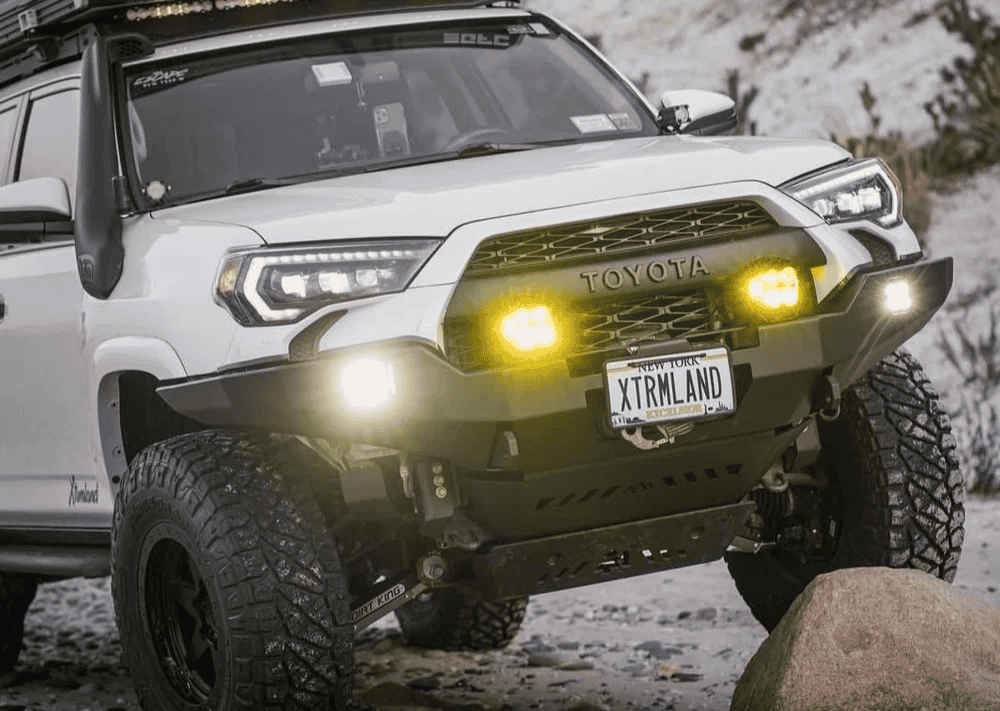Overland Vehicles

A national park explorer truck is built for long days on scenic roads, short spurs of washboard, and tight campground loops. It should carry passengers and gear comfortably while staying within park size limits and campground pad lengths. Clearance and approach angles matter on rutted pullouts and rough unpaved sections, but the aim is stability and control rather than a rock crawling setup. Choose all terrain tires with strong sidewalls, size them conservatively to preserve braking, steering, and range. Match tire diameter and load rating to the truck’s gear ratio and gross vehicle weight so handling remains predictable on mountain grades.
Payload is the quiet hero. Factor water, food, recovery gear, roof or bed racks, protective armor, and a fridge before adding anything cosmetic. Weigh the truck fully loaded to keep axle ratings in check. Skid plates and low profile bumpers protect the underbody without adding unnecessary bulk. A modest suspension upgrade that controls sway and supports constant load makes long park drives less tiring and reduces head toss on patched pavement.
Half ton and three quarter ton platforms both work, but choose based on payload and travel duration. Frequent multi week trips or families with bikes and water sports gear often exceed half ton payload once armor, canopy, and tools are added. Keep the center of gravity low. Bed racks that sit just above the cab line reduce drag and tree strike risk on narrow loops. Verify overall width and height against park tunnels and tree canopies, and remember seasonal growth can narrow branches over roads.
Power, water, and storage turn a truck into a travel system. For park hopping, a compact lithium battery paired with a DC to DC charger supports a fridge, camp lights, chargers, and a small inverter for cameras or laptops. Solar helps but daily driving between overlooks often provides all the charge you need. Route cabling cleanly, fuse every run, and mount components where heat and dust are managed.
Water planning starts with use cases. Drinking, dishes, and quick rinses are common needs inside parks with campground spigots. A 10 to 20 gallon onboard tank with a food grade hose often covers a long weekend. Use quick connects for simple winterization. For food, a compressor fridge mounted on a slide keeps wildlife attractants sealed and out of view. Use hard sided storage bins that latch securely and fit the bed layout so camp tear down is fast and quiet.
Lithium iron phosphate batteries offer stable output and usable capacity in a compact footprint. Size the battery by daily watt hours: fridge draw, lighting, and device charging. Use a shunt based monitor to understand real consumption and adjust habits. Tie the system into engine charging with proper isolation so you do not strand the starter battery at a viewpoint.
National parks prioritize preservation and visitor safety. Many heavy visitation parks use timed entries, site reservations, or corridor permits. Study gate hours, shuttle only zones, and road construction before leaving cell coverage. Some iconic segments have length and width restrictions that affect mirrors, racks, and trailers. Quiet hours matter. Run silent lighting, keep generator noise off your list by building an efficient battery system, and park wheels fully on the pavement where required.
Wildlife safety is non negotiable. Store food and scented items in designated lockers when provided or inside a closed canopy or hard case. In bear country, follow local guidance on canisters or boxes even if your truck has a locking shell. Keep a clean camp, avoid unattended coolers, and give animals space on road shoulders. Pack trash out, strain dishwater, and follow posted rules for gray water.
Conditions swing fast. Spring melt can close shoulder season roads, summer brings heat and traffic, and fall presents icy mornings on mountain passes. Carry a compact compressor, plug kits, and traction boards for gravel spurs. Check park road status pages the evening before and the morning of your drive. Download offline maps and mark fuel, water, and dump stations near park boundaries.
If your checklist feels long, that is normal. Most travelers refine their setup after the first big loop through multiple parks. When you are ready to turn a plan into a dependable truck, partner with a shop that knows how to balance comfort with compliance. Explore proven layouts and protection on our overland rigs page, then see how a custom overland upfit can be tailored to your routes, gear, and crew size. For a look at process, craftsmanship, and support culture, visit why choose OZK Customs.
A capable national park explorer truck is quiet, tidy, and ready every morning. Build around payload, protection, and simple power, then add comforts that reduce camp chores. When you want a truck that clears the park gate test without drama, our team can guide you from spec to delivery with clean wiring, tidy storage, and protection that pays for itself the first time a rock tips up under the skid.
Ready to map your routes to a build plan that fits your parks, seasons, and crew? Review examples at overland rigs and schedule a consult to outline storage, power, and protection that match your travel pace. We will blueprint a clean, reliable upfit so your next park circuit is all views, no guesswork.
Want a quiet, capable truck that cruises park roads and sets camp in minutes? Book a consult. Our team will map your travel style to a proven upfit with safe power, smart storage, and road tested protection. Start your build plan today and be trip ready on your timeline.
ADDRESS:
6159 E Huntsville Rd, Fayetteville, AR 72701
PHONE:
(479) 326-9200
EMAIL:
info@ozkvans.com